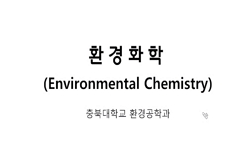This study aimed to optimize the pot volume and substrate for strawberry pot cultivation through an analysis of strawberry growth and the composition of the drainage solution in a hydroponic cultivation system. Strawberry plants were cultivated for si...
http://chineseinput.net/에서 pinyin(병음)방식으로 중국어를 변환할 수 있습니다.
변환된 중국어를 복사하여 사용하시면 됩니다.
- 中文 을 입력하시려면 zhongwen을 입력하시고 space를누르시면됩니다.
- 北京 을 입력하시려면 beijing을 입력하시고 space를 누르시면 됩니다.



Optimization of the Pot Volume and Substrate for Strawberry Cultivation in a Hydroponic System
한글로보기https://www.riss.kr/link?id=A108903574
- 저자
- 발행기관
- 학술지명
- 권호사항
-
발행연도
2023
-
작성언어
English
- 주제어
-
KDC
525
-
등재정보
SCIE,SCOPUS,KCI등재
-
자료형태
학술저널
- 발행기관 URL
-
수록면
634-644(11쪽)
- 제공처
-
0
상세조회 -
0
다운로드
부가정보
다국어 초록 (Multilingual Abstract)
This study aimed to optimize the pot volume and substrate for strawberry pot cultivation through an analysis of strawberry growth and the composition of the drainage solution in a hydroponic cultivation system. Strawberry plants were cultivated for six months with various combinations of pot volumes (830 ㎤ and 1,140 ㎤) and substrates (commercial substrate, coir, and granular rockwool). On day 63 after transplantation, the growth of the strawberry plants was greatest when the plants were grown in pots with a volume of 830 ㎤ and with a commercial substrate. On day 182 after transplantation, growth was greatest when the plants were grown in pots with a volume of 830 ㎤ using a commercial substrate or coir, as well as in pots with a volume of 1,140 ㎤ using a commercial substrate. The drainage solution from the coir substrate exhibited a pH and electrical conductivity (EC) similar to those of the nutrient solution. The ion concentrations in the coir drainage solution were similar to those in the nutrient solution throughout the cultivation period. These results indicate that a pot volume of 830 cm3 and coir are most suitable for approximately six months of strawberry pot cultivation. In pot cultivation, the establishment of an appropriate range of substrate volumes considering the cultivation period is crucial. An analysis of changes in the drainage solution influenced by the substrate composition and cultivation duration can enhance nutrient management, optimize resource utilization, and promote the reuse of nutrient solutions in hydroponic systems. These findings contribute to the development of sustainable and efficient approaches to strawberry pot cultivation, emphasizing the maximization of resource utilization while ensuring the attainment of high-quality yields.
동일학술지(권/호) 다른 논문
-
- 한국원예학회
- W.M. Upeksha Darshani Wijethun
- 2023
- SCIE,SCOPUS,KCI등재
-
과방중 및 지베렐린 농도에 따른 ‘Shine Muscat’ 포도의 과피갈변 발생 양상
- 한국원예학회
- 박준영(JunYoung Park)
- 2023
- SCIE,SCOPUS,KCI등재
-
포도 ‘진옥’과 ‘캠벨얼리’의 열과 발생과 생육 및 과실특성과의 관계
- 한국원예학회
- 최영민(Young Min Choi)
- 2023
- SCIE,SCOPUS,KCI등재
-
Growth and Yield of Cucumber in a High-Wire Growing System with Different Training Methods
- 한국원예학회
- Eun-Young Choi
- 2023
- SCIE,SCOPUS,KCI등재




 DBpia
DBpia





